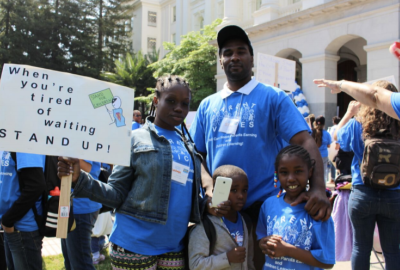
Chimamanda Ngozi Adichie’s Ted Talk “The Danger of a Single Story” turned 10 years old this summer, yet her message still resonates.
Adichie cautions that stories become dangerous when they “show a people as one thing, only one thing, over and over again, and that is what they become.” She defines this practice of storying in relation to power, or “the ability not to just tell the story of another person, but to make it the definitive story of that person.” Hence, stories don’t just naturally emerge. People in power construct them and ensure that they are shared widely–through mainstream and social media, through our museums and history books, in political speeches and campaign rallies. Like a virus, they spread until they are part of the air we breathe, the water we swim in.
Why has Adichie’s talk resonated with so many people? It is because we can all relate to being misjudged, or misjudging others, based on a single story about us/them or the group(s) to which we/they belong.
As researchers and evaluators—particularly those of us who sit outside the communities we study—we also use our power—at times without knowing it—to perpetuate single stories about our research participants, their cultures, and their communities. As outsiders, our racial, socioeconomic, cultural, linguistic, and/or educational backgrounds will often differ from the backgrounds of our insider participants.
As researchers and evaluators—particularly those of us who sit outside the communities we study—we also use our power—at times without knowing it—to perpetuate single stories about our research participants, their cultures, and their communities. As outsiders, our racial, socioeconomic, cultural, linguistic, and/or educational backgrounds will often differ from the backgrounds of our insider participants.
There are at least three kinds of single stories that exemplify what I am referring to:
- The Single Story of Inequities as Natural Occurrences. Researchers too often document inequities or “gaps” as if they were naturally occurring. For example, the authors of the widely circulated report “The Unwavering SES Achievement Gap: Trends In U.S. Student Performance” (Hanushek, Peterson, Tapley, & Woessmann, 2019) hypothesize that income inequality has driven persistent socioeconomic disparities in test scores over the past 50 years. Rather than reviewing how lawmakers have created and widened inequality, the authors chose to review research attributing the so-called “achievement gap” to variation in parenting practices, neighborhood crime, and exposure to traumatic stress. Consciously or not, they chose to omit other stories: the story of how the Federal Housing Authority made it impossible for Blacks to secure mortgages and consequently amass wealth (Coates, 2014); the story of how lawmakers rewarded state and local law enforcement agencies for locking up Black and Brown bodies and then excluded ex-felons from securing housing and jobs (Alexander, 2012); the story of how “right-to-work” legislation in 27 states contributed to the dismantling of unions, substantially decreasing access to fair-wage jobs, especially for Black women (Rosenfled & Kleycamp, 2012). These are the stories researchers can choose to lift up, but too often, the story we tell starts with dysfunctional families and neighborhoods, not with dysfunctional lawmakers and policies.
- The Single Story of Brokenness (Broken Communities and Broken People). Researchers too often portray communities of color as broken. Consider how we toss around terms like “at-risk” and “disadvantaged” as if these labels won’t be internalized by the people to which we casually assign them. If we were to tell a more complete story, we would show how communities of color thrive, having found myriad ways to be resilient amidst centuries of policies that have sought their demise (Kendi, 2017).
- The Single Story of Our Claims to Truth. Researchers too often assume that the methods we learned through our professional training will capture the truth. Consider how a survey instrument can be deemed “valid” or “reliable” without ever asking the people who took the survey if it aptly captured their experience. If we were to tell a more complete story, we would share with humility that many community members won’t share their truths on our surveys or in our interviews because of language differences, because our questions don’t resonate with their experiences, and because they don’t trust us.
To paraphrase Adichie, the single stories we researchers tell, both how we tell them and who tells them, often do more harm than good.
This is a tough pill to swallow for well-intentioned scholars, but the good news is that some researchers and evaluators are increasingly engaging communities other than their own in the inquiry process for the purpose of affirming stories that are nuanced, plural, and multi-perspectival. This is why participatory research and evaluation practices are so important. They shift the gaze from oversight to insight. They allow for the possibility of many stories instead of one, the creation of knowledge born not of oppression but of true liberation.
Participatory research and evaluation offer a more humane, just, and rigorous approach to inquiry. The stories that emerge can be far more textured and complete. Moreover, the threats of producing research that contributes to single stories can be lessened.
This is why I could not be prouder to release The Ripple Effect in Action: What 7 Parent Leadership Organizations Learned from Participatory Evaluation. Our new book shares important lessons about cultivating leadership, activism, and a more equitable future for children. Teams comprised of parent leaders and staff from seven parent leadership organizations throughout the U.S. conducted their own evaluations with training and support from Dialogues in Action and NYU Metro Center. These participatory evaluations honored the unique contexts and cultures of each organization and inspired organizations to use data for reflection and action.
You will find power in reading them tell their stories.
Visit The Ripple Effect in Action webpage to purchase the book, download a PDF or summary, and find out more about the Parent Leadership Indicators Project.

